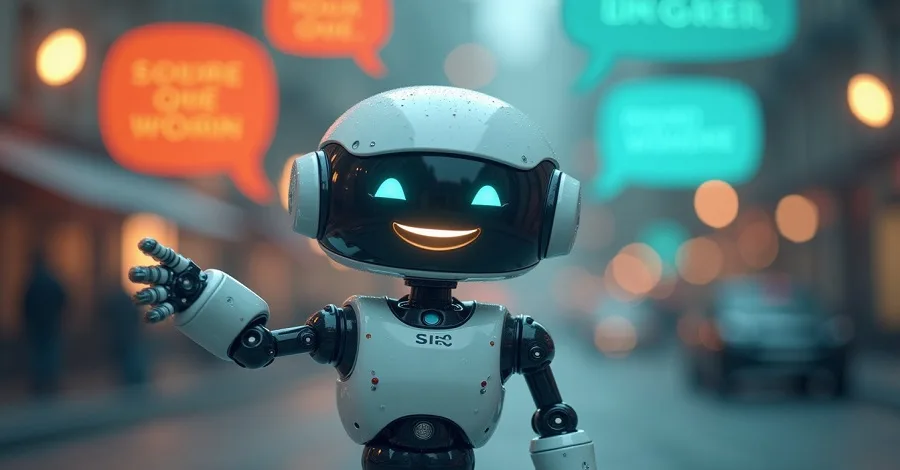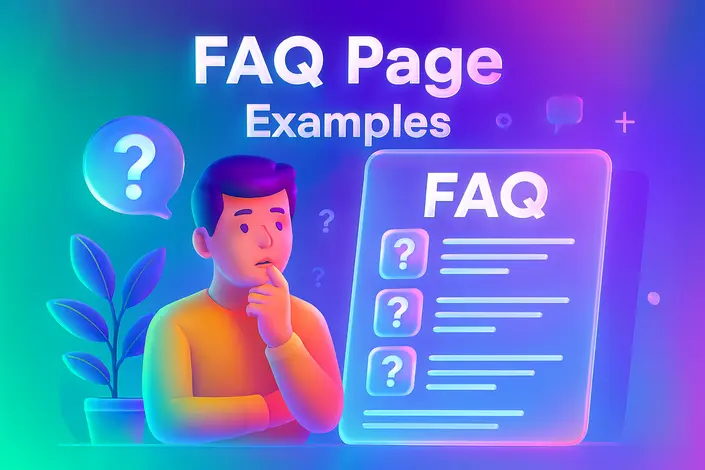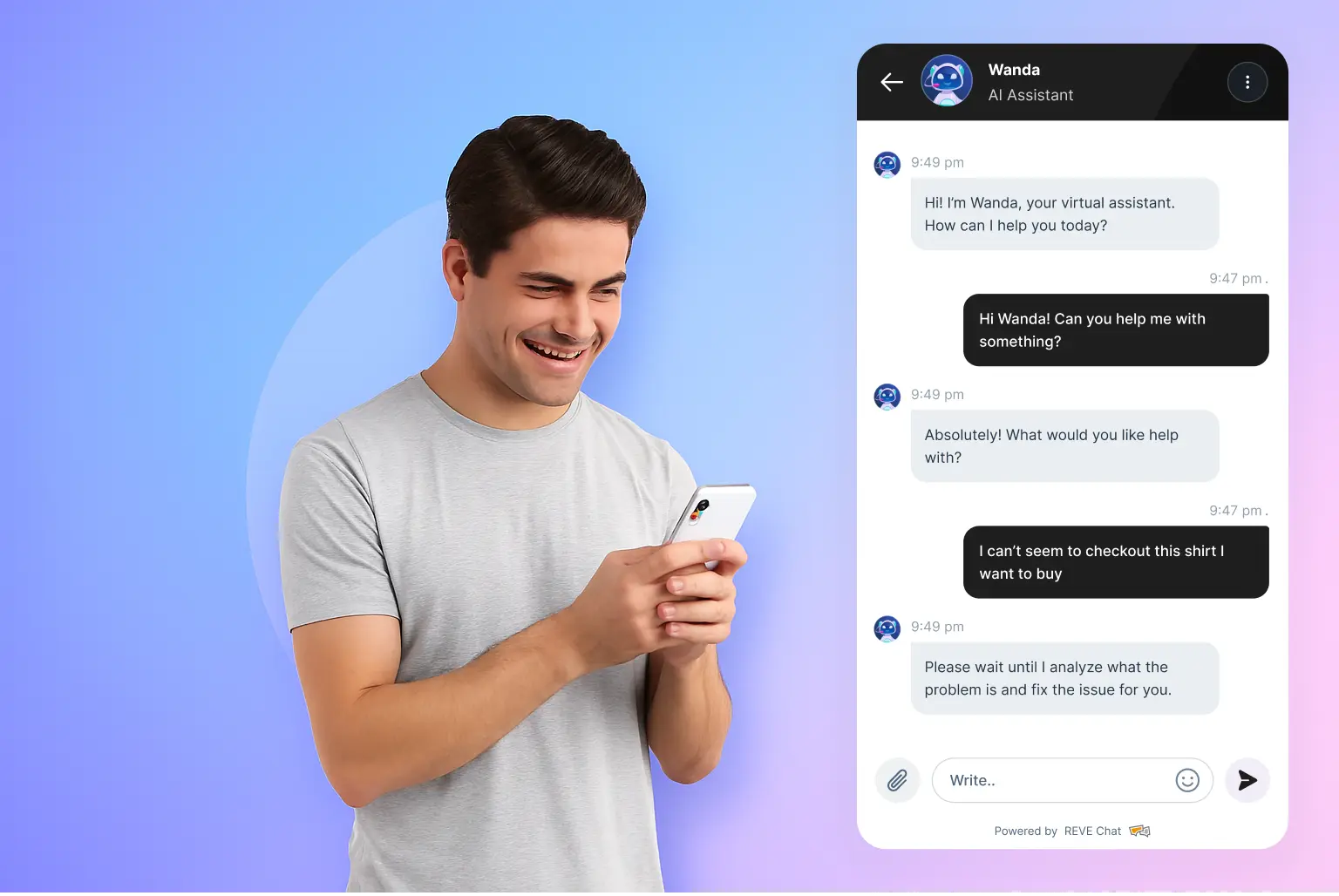10 Ways to Build Chatbot Personality & Its Importance
- January 10, 2024
- 11 mins read
- Listen

Chatbots with distinct personalities have become the linchpin for brand-customer interactions. Studies show that 75% of consumers prefer engaging with brands that offer a human-like touch through their chatbots. These digital personas aren’t just functional; they’re the digital face of a brand that drives up to a 40% increase in customer satisfaction.
There is no doubt that the personalities of chatbots have evolved from a novelty to a strategic imperative in today’s quest for authentic connections.
In this article, we’ll speak about the chatbot personality, ways to build it, and answer why building a chatbot persona is crucial for a brand.
What is a Chatbot Personality?
It refers to the distinct traits, characteristics, language styles, and behaviors that a chatbot embodies during user interactions. It’s the persona or identity that the chatbot adopts to shape how it communicates, engages, and connects with users to deliver a more personalized and engaging experience.
For instance, a chatbot with a friendly and helpful personality might use casual language. It will have the ability to show empathy, crack jokes, or use emojis to create a welcoming atmosphere during conversations.
On the other hand, a professional chatbot might maintain a formal tone, provide precise information, and focus on delivering accurate responses without much emotive language.
Know more: What is a Chatbot & How does it work?
Importance of Personality for Chatbots
The personality of chatbots plays a pivotal role in forging meaningful connections and providing better user experiences. It humanizes interactions to foster relatability and engagement. Beyond that, it serves as a digital ambassador, aligning with a brand’s identity and values to ensure consistency in tone and character. This persona caters to diverse user preferences to enhance satisfaction by adapting to varying communication styles.
Moreover, a well-crafted personality has the power to evoke emotions, uplifting moods, and create lasting positive associations. It’s the key to fostering brand loyalty amid competitive markets. It enables chatbots to adapt, learn, and deliver personalized experiences. Whether through visual representations or communication style, a chatbot’s personality is the bridge that transforms mere interactions into memorable and meaningful connections.
To ignite your creativity in designing unique and engaging chatbot personas, explore a range of chatbot ideas that are in sync with your brand’s objectives and the expectations of your audience.
Why Is Chatbot Persona Vital for a Brand?

Chatbot characters portray the brand voice. It holds immense significance for a brand due to several compelling reasons:
1. Brand Identity Reinforcement
You should think of a chatbot’s personality as the brand’s ambassador in the digital world. How does a human ambassador represent a brand? Always remember that your bot personality is the same as a human ambassador. A distinct personality aligns with the brand’s values, mission, and vision, reinforcing its identity in the minds of users.
2. Engagement and Emotional Connection
You cannot deny the fact that a chatbot’s personality can evoke emotions and foster a connection beyond providing information or assistance. For instance, a cheerful and helpful chatbot can uplift a user’s mood and make the interaction more enjoyable and memorable. You should keep one thing always in mind: emotional connections drive user engagement and can lead to stronger brand loyalty.
3. Consistency Across Touchpoints
Whether it’s through the website, social media, or messaging platforms, maintaining consistency in communication is crucial for brand perception. A defined personality ensures that, regardless of the platform, the chatbot’s tone, language, and behavior remain consistent. It reinforces the brand’s message and values.
4. Enhanced User Experience
Can you imagine interacting with a chatbot that feels robotic and lacks personality? It might get the job done, but it won’t leave a lasting positive impression. On the other hand, a chatbot with a well-crafted personality can make your user experience more engaging, enjoyable, and memorable. Also, it leads to higher satisfaction and repeat interactions.
5. Tailored Brand Voice
The personality of a chatbot guides its voice and tone. A brand targeting young adults might opt for a casual and friendly tone. While a corporate brand might choose a more formal and professional demeanor. This tailored voice resonates better with the intended audience to foster a deeper connection.
6. Competitive Edge through Differentiation
Your chatbot’s personality can serve as a unique selling point in this market flooded with similar products or services. A distinct and appealing personality distinguishes a brand’s chatbot from competitors. It attracts and retains users who resonate with that specific personality.
7. Humanization of Technology
Despite being an AI-powered tool, a chatbot with personality humanizes the interaction. It bridges the gap between technology and human users. It provides a more conversational and relatable experience. This is particularly crucial for users unfamiliar with interacting with AI.
Chatbot Personality Vs. Performance
The interplay between chatbot personality and performance is critical for achieving optimal user engagement and satisfaction. Here’s a breakdown of their relationship:
1. Chatbot Personality

The distinctive characteristics, speech, and actions embodied by a chatbot encompass the following aspects.
i. Engagement and Connection
- Human-like Interaction: A well-defined personality fosters a relatable and engaging interaction to establish emotional connections similar to human conversations.
- Brand Alignment: Aligning the personality with the brand’s identity helps create a consistent and memorable experience.
ii. User Satisfaction and Loyalty
- Enhanced Experience: A relatable and friendly chatbot personality leads to higher user satisfaction by making interactions more enjoyable and personalized.
- Building Trust: You can establish trust through a consistent and empathetic persona that encourages long-term user loyalty.
iii. Differentiation and Brand Image
- Stand Out in Competition: If your chatbot persona is unique, you can differentiate the brand in a crowded market to contribute to a stronger brand image.
- Positive Perception: A positive and resonating personality can influence how users perceive the brand. It impacts their buying decisions and advocacy.
2. Chatbot Performance

Optimizing the chatbot over time is vital to get optimum performance. Now let’s take a look at the key aspects.
i. Accuracy and Efficiency
Just think for a minute you’re interacting with a chatbot that not only responds promptly. Also, it provides spot-on information and you’re receiving exactly what you need precisely. That’s the hallmark of a high-performing chatbot. It’s designed to minimize errors to ensure a smoother and more reliable experience for you.
ii. Scalability and Adaptability
Think about the times when you’ve had complex questions or unique needs. A well-performing chatbot doesn’t shy away from complexity. Instead, it thrives on it. It’s like having a knowledgeable friend who can adapt to your various queries. No matter how intricate, while effortlessly handles increased interactions without compromising quality.
iii. Data-driven Insights
Have you ever appreciated when a service seems to understand you better over time? A chatbot’s performance includes its ability to learn from your interactions. It gathers data effectively to enhance its responses and personalize your experience. The insights it gains are like breadcrumbs. It guides it towards constantly improving and refining strategies to serve you better.
3. Interconnection
Do you know how some conversations feel more engaging and enjoyable? That’s where personality steps in. A chatbot’s personality adds that extra flair, making interactions more vibrant and relatable. But it doesn’t stop there. Alongside that charm, high performance ensures reliability. It’s the balance between a friendly chat and accurate, reliable information—both equally important for your optimal experience. The essential balance between personality and performance for an optimal user experience.
Undeniably, personality bots drive engagement. While performance ensures reliability, both require ongoing refinement based on user feedback and trends.
10 Steps to Build an Enriching Personality Bot

To create an engaging chatbot personality, you need a series of deliberate steps. From defining the purpose and audience to continuously monitoring and refining. Each stage contributes to sculpting a relatable, consistent, and effective persona.
1. Define the Purpose and Audience
This foundational step involves defining why the chatbot exists and who will interact with it. You have to understand the use case for the chatbot and its primary objectives. Whether it’s customer support, sales assistance, or information dissemination. Once you identify the audience demographics, preferences, pain points, and communication preferences. It’ll help you to tailor the chatbot’s personality effectively.
2. Develop Character Traits
It defines the essence of the chatbot’s personality. These traits—such as friendly, professional, empathetic, or witty—guide the language, tone, and demeanor during conversations. You should consider how these traits align with the brand’s values and the expectations of the target audience to create a consistent and relatable personality.
3. Craft Conversational Style
It encompasses the language, vocabulary, tone, and pacing of interactions. This style should reflect the chosen traits. For instance, a friendly personality bot might use casual language, emojis, and friendly greetings. A professional chatbot maintains a formal tone and delivers precise information.
4. Understand Context and Intent
You need to train the chatbot to understand user queries and context is crucial. Natural Language Processing (NLP) and Machine Learning (ML) help the chatbot discern user intent, context, and nuances in language to provide accurate and relevant responses. Also, contextual understanding enhances the chatbot’s ability to engage in meaningful conversations.
5. Use Visual Elements
Visual representations, such as avatars or images, complement the chatbot’s personality and contribute to a more engaging user experience. You can use visual elements to reinforce the brand’s identity or align with the chatbot’s persona. It enhances the overall interaction.
6. Test and Iterate
In this stage, you can conduct rigorous testing with real users to gather feedback on the chatbot’s personality. Iteratively refine the personality traits, conversational style, and contextual understanding based on user interactions. This ongoing process ensures continuous improvement and alignment with user expectations.
7. Set Boundaries and Be Transparent
You need to communicate the chatbot’s capabilities, limitations, and areas where human intervention might be necessary. You can build transparency and trust to manage user expectations. It helps to prevent frustration or misunderstandings during interactions.
8. Adaptability and Learning
You can enable the chatbot to learn from user interactions, feedback, and data analysis. Implement mechanisms for continuous learning to refine its responses, adapt to new scenarios, and evolve its personality to meet changing user needs.
9. Ethics and Sensitivity
Train your personality bot to handle conversations with sensitivity and respect. Ensure it avoids controversial topics, remains neutral, and handles sensitive information or discussions empathetically.
10. Monitor and Maintain
Don’t forget to monitor the chatbot’s interactions regularly to collect user feedback and analyze data to maintain its personality relevance and effectiveness. Continuous monitoring helps identify areas for improvement. It ensures the chatbot stays aligned with the brand’s objectives and user preferences.
5 Chatbot Personality Examples
1. Siri (Apple)
Siri, Apple’s virtual assistant, embodies a helpful, conversational persona with a touch of wit. It engages users in casual conversation. It offers assistance in various tasks like setting reminders, providing directions, sending messages, and even cracking jokes.
For instance, when asked about the weather, Siri might humorously respond with a quip about carrying an umbrella.
2. Google Assistant
It maintains a knowledgeable, adaptable, and professional persona. Google Assistant delivers precise information to adapt user preferences across devices, and assists in managing schedules, answering questions, and controlling smart devices.
For example, it offers factual responses to inquiries about general knowledge, weather forecasts, or directions.
3. Cleverbot
Cleverbot is recognized for its conversational and adaptive nature. It engages users in open-ended dialogue, which it learns from past interactions to mimic conversational patterns. It might include its ability to engage in a conversation about various topics to continue learning and evolve its responses based on user inputs.
4. Replika
Replika is designed as a supportive, empathetic AI companion. It engages users in meaningful conversations, asking personal questions, offering emotional support, and adapting its responses to the user’s emotional tone.
For instance, it might provide comforting messages or engage in discussions about personal interests.
5. Poncho
Poncho comes with a strong chatbot persona. It stands out with its quirky, playful, and informative personality. Specifically, focusing on engagingly delivering weather updates. It uses humor and personalized forecasts to entertain users. While providing accurate weather information.
An example could be Poncho using jokes or funny comments alongside weather updates to make the experience more enjoyable.
Summary
The concept of chatbot personality isn’t merely an embellishment. It’s the secret ingredient that transforms a conversation into an unforgettable experience. It’s evident that a chatbot’s personality isn’t just about providing information; it’s about establishing connections, fostering engagement, and humanizing technology in a way that resonates with each user.
A well-crafted personality in a chatbot embodies a brand’s essence. It’s the bridge that spans the gap between efficient functionality and emotional resonance that creates an immersive journey for users.
Chatbot persona is a driving force that elevates user experience to strengthen brand-consumer relationships and sets the stage for future innovations. It’s an exciting journey where technology intertwines with human-like interactions to enrich our digital encounters and shape the way we connect and engage in this ever-evolving digital world. Build your chatbot with an enriched personality with REVE Chat.
Frequently Asked Questions
Yes, chatbots can be designed with unique personalities to align with a brand’s tone and customer expectations. The bot’s personality is shaped through language style, the brand’s message, and tone, making conversations more engaging and human-like.
Yes, giving your chatbot a name and avatar makes it more relatable and engaging. It looks more human alike and helps users feel more comfortable communicating with it.
Yes! A chatbot with a well-crafted personality can create positive experiences during customer interactions, making them feel heard and valued. However, an overly robotic personality may lead to dissatisfaction and irritation.
Yes, chatbot personalities can be refined based on user feedback, insights, and brand updates. Regular testing and improvements ensure the chatbot remains effective and engaging.
Yes, a chatbot’s personality can be slightly adjusted for different communication channels. For example, a chatbot on WhatsApp can be more conversational, while on official websites, it can maintain a more formal tone.




